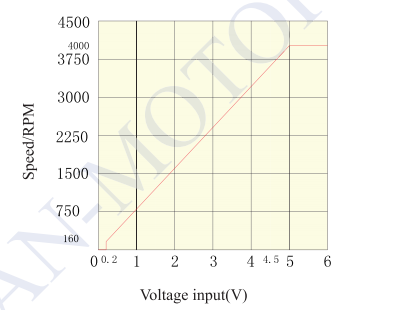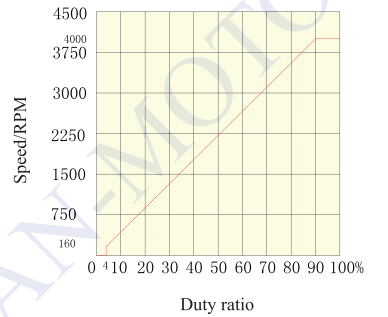What are basic ways of BLDC speed control?
There are various methods for speed regulation of BLDC motors, including external analog signal, external and built-in potentiometers, pulse frequency, PWM, and RS485 communication. This article will introduce various speed control methods from how it works, advantages and disadvantages, and it’s applications.
External analog signal speed regulation
BLDC motors are controlled by adjusting the voltage or current in the motor driver using external analog signals. Changing the voltage or current can alter the motor’s motion state, thus control over the motor’s speed and torque.
The driver receive commands from controller or PLC , and then outputs the corresponding voltage and current to control the motor. The controller converts external analog signals (e.g., voltage, current) into digital signals, generates control signals through calculations and logical control, and send them to the driver. While PLC achieves motor control through programming. Below chart shows the relationship between analog signal voltage and motor speed . The driver is ICAN company’s BLD-300B under closed loop no load.
As analog signal control can more accurately control the motor’s speed and torque, ensuring stability at high speed and high load, and respond quickly to different environments. This control method is typically used in applications that require higher precision and faster response speed, such as robotics, aerospace, and automotive industries.
Pulse frequency speed regulation
By adjusting the frequency of the pulse signal that drives the BLDC motor, the motor speed will be changed. This type of speed control is usually achieved through specific electronic speed controllers or inverter. These devices are installed in the motor control system and connected to the motor windings. Then set the pulse frequency through the control panel of the electronic speed controller or inverter to required speed. Once the pulse frequency is set, the motor speed can be changed by using buttons or knobs on the controller.
The advantages of BLDC pulse frequency control include high control accuracy, fast response speed, and stable speed. It can also achieve multiple operating modes, such as forward, reverse, and constant speed. Due to its efficient energy utilization and precise motor control, it has been widely used in many applications, such as wind power generation, aerospace, and other fields.
PWM speed regulation
PWM speed regulation is to modulate the constant DC voltage into a pulse voltage with constant frequency and variable pulse width. So that the average output voltage can be changed to adjust the motor speed. Actually, it is to adjust the time duty ratio of the high level and low level of the square wave. For example, a 20% duty ratio is 20% of the high level time and 80% of the low level time.
As seen from above picture, the larger the duty ratio, the larger the voltage, the higher the speed, otherwise the speed will decrease.Below shows the relationship of duty ratio and motor speed when using ICAN company ‘s BLD-300B BLDC driver under closed loop, no load.
PWM speed regulation uses digital signals, so it has the advantages of strong anti-noise ability and longer communication distance.
External potentiometer speed regulation
The external potentiometer is a manual device that allows users to control the motor’s speed by manually rotating the potentiometer and changing the voltage signal output. Typically, the external potentiometer is installed on the front panel of the motor controller, making it easy for users to adjust the motor’s speed manually. While the adjustment range of the potentiometer is relatively limited, it offers convenient and intuitive control.
Built-in potentiometers speed regulation
Typically, BLDC motors have built-in potentiometers for speed regulation. This method does not require the use of an external potentiometer, but instead changes the motor’s speed by using a potentiometer integrated into the motor. Compared to external potentiometer speed regulation, built-in potentiometer speed regulation has higher control precision and range.
As it can provide more accurate control over the potentiometer output through the internal circuitry of the motor controller, it is suitable for applications that require more advanced control. However, for some simple applications, external potentiometer speed regulation can also provide a convenient and economical solution.
Communication signal-RS485
RS485 is a communication protocol that can be used for data communication between multiple devices. Combining RS485 with a BLDC controller can achieve BLDC speed control . Usually, there is an RS485 interface on the BLDC controller, which can be connected to master controller. Through the RS485 interface, the master controller can send commands to the BLDC controller ,and thus control the motion of the BLDC motor.
In conclusion, the choice of speed control method will depend on the specific requirements of the application, such as precision, response speed, and control range. By understanding these different methods, users can choose the most suitable way for their needs, and achieve optimal performance from their BLDC motor systems.





